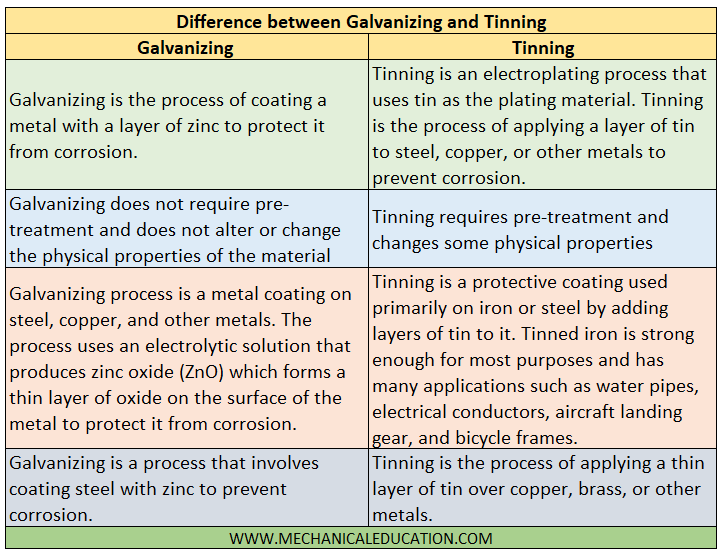Difference between Galvanizing and Tinning
What is Galvanizing?
Galvanizing is a metal finishing process that involves coating the surface of a metal with zinc.
What is Tinning?
Tinning is an electroplating process that involves coating the surface of a metal with tin.
Difference between Galvanizing and Tinning?
Galvanizing is the process of coating a metal with a layer of zinc to protect it from corrosion.
Tinning is an electroplating process that uses tin as the plating material. Tinning is the process of applying a layer of tin to steel, copper, or other metals to prevent corrosion.
These two processes are different because Galvanizing does not require pre-treatment and does not alter or change the physical properties of the material, while Tinning requires pre-treatment and changes some physical properties.
A Galvanizing process is a metal coating on steel, copper, and other metals. The process uses an electrolytic solution that produces zinc oxide (ZnO) which forms a thin layer of oxide on the surface of the metal to protect it from corrosion.
Tinning is a protective coating used primarily on iron or steel by adding layers of tin to it. Tinned iron is strong enough for most purposes and has many applications such as water pipes, electrical conductors, aircraft landing gear, and bicycle frames.
Galvanizing is a process that involves coating steel with zinc to prevent corrosion.
Tinning is the process of applying a thin layer of tin over copper, brass, or other metals.
Galvanizing has more surface area covered by zinc while Tinning only covers the surface area where it’s applied.
Galvanizing creates a barrier on the surface of the metal which prevents it from corroding.
Galvanizing has a higher melting point than Tinning, which makes it more durable in the long run.
Galvanized steel will be able to withstand heavy loads better than stainless steel.
Galvanizing is a highly effective way to protect against corrosion and rusting of metal than Tinning.



